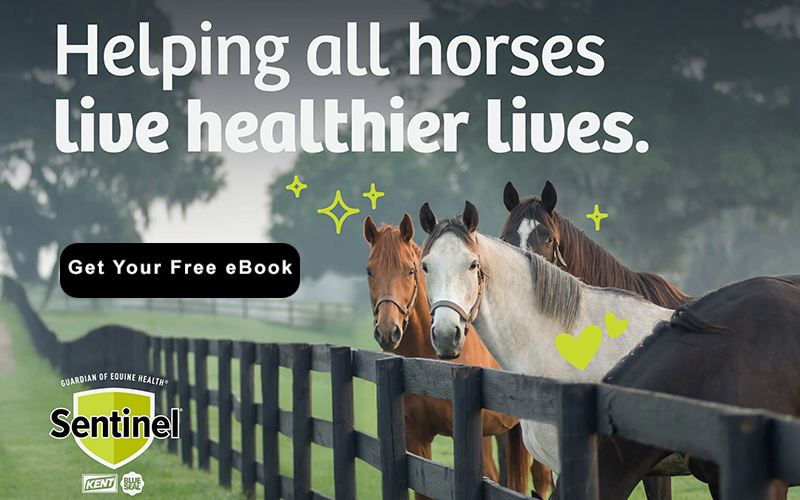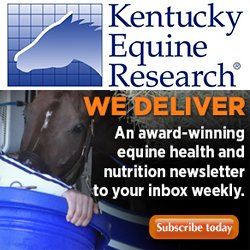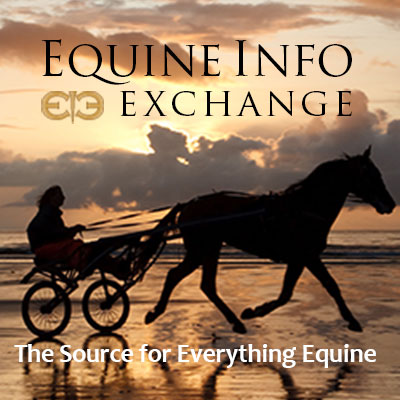Health & Education
We all want the best care possible for our horses. The Heath & Education section covers both Learning Institutions, Organizations as well as many sources for equine assistance including Veterinarians and Farriers.
For those who want a to formally study horses, the Education section includes College Riding, Equine Studies, and Veterinary Schools. Learn about the wide variety of horses in the Horse Breeds section. Supplements and Treatments Therapy are also included in the section.
Everyone can learn from Fine Art and there are some specialty Museums that might surprise you.
Horses as a therapy partner enrich the lives of the disabled. These facilities are listed in our Therapeutic Riding section. To help children and young adults build confidence and grow emotionally, please see the resources available on the Youth Outreach page.
Looking for a place to keep your horse? You can find it in the Horse Boarding section. Traveling? Find a Shipping company or Horse Sitting service if your horse is staying home!
Want to stay up to date with the latest training clinics or professional conferences? Take a look at our Calendar of Events for Health & Education for the dates and locations of upcoming events.
Do we need to add more? Please use the useful feedback link and let us know!
"Work with the nature of the horse" ~ Monty Roberts
In part two of this new online video series, Monty works to put the first halter on Cinder, a wild horse, outside of the gentling chute.
"To blame a horse for anything is like blaming the night for being dark" ~ Monty Roberts
In this online video series, Monty works with a wild horse called Cinder.
Read more: Monty Roberts - Cinder Part 1: Join Up with a Wild Horse (2:04)
In this episode, Dr. Charlie Scoggin and Dr. Maria Schnobrich take you on an in-depth exploration of the commercial opening of the state-of-the-art in vitro fertilization (IVF) lab at Rood & Riddle Equine Hospital. They spotlight the groundbreaking techniques shaping the future of equine reproduction, and in particular, they discuss the significance of Intracytoplasmic Sperm Injection (ICSI). Listeners will gain a deeper understanding of the intricate process of ICSI fertilization and its role in overcoming various reproductive challenges in horses. This technology is enhancing success rates and opening new possibilities for horse owners and breeders.
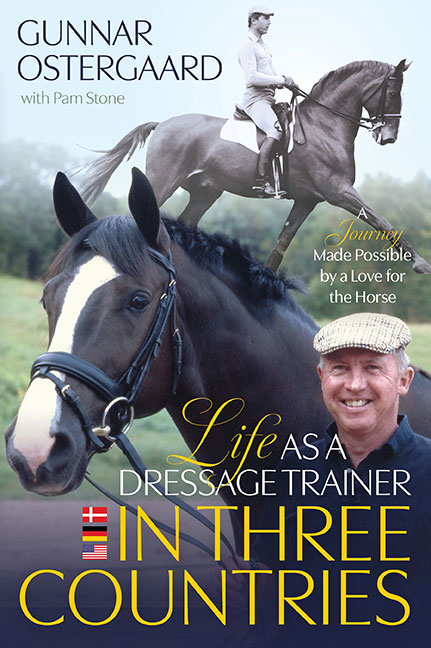
The following is an excerpt from Life as a Dressage Trainer in Three Countries, by Gunnar Ostergaard, with Pam Stone
With a consistent address, and a string of students and horses to train, I was beginning to settle into my life at Frederiksdal. I felt content and confident in my ability, as all the horses in my training were developing according to my expectations. The apple of my eye was Lotus, a Hanoverian mare imported from Germany. In those days, that was pretty impressive, as it was quite expensive to import horses from Germany. She was a beautiful mare who moved well enough to be competitive in dressage and had the bonus ability of being able to jump.
With happy anticipation, I entered Lotus in my first show since arriving back in Denmark. To be honest, I felt a little cocky. After all, I had been trained in Germany, was doing well in Denmark, and had a talented horse. Convinced that I would win, I rode what I thought was a very good, error-free test, and left the arena with a smile on my face and a pat for the mare.
When the scores were posted, I was gutted. I finished third. At the bottom of the sheet the judges had written, “Rider is sitting crooked.” How could that possibly be? How could I have not felt that? I was mortified, and wished the ground would open up and swallow me whole. It is said that pride goeth before a fall, and it certainly did with me. That day, I wasn’t just served a slice of humble pie, I was given the whole thing.
My self-esteem in tatters, I wandered around the showgrounds to watch the other classes. I had heard of a show-jumping trainer named N.K. Hansen, who had an envious string of wealthy clients, good horses, and skilled riders. I spotted Hansen riding a horse that was notorious for refusing, but with N.K. in the saddle, that was not an option for this horse. I watched him soar over jump after jump.
One of the things that was becoming apparent in Denmark was that I was expected to teach jumping as well as dressage. I had jumped, and competed in jumping—it was required to earn my bereiter certificate—but my focus in Flensburg had been dressage. In Denmark, however, you both jumped and rode dressage.
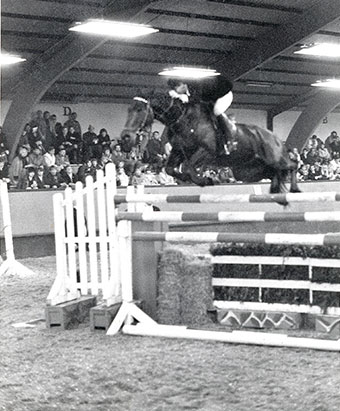
There was only one thing to do: find a book on it; memorize the details such as distances and combinations, as well as teaching methods; and then try to sound as if I knew what the hell I was talking about. In the end, I absorbed the material, and sounded quite convincing.
While my students weren’t on the road to becoming professional show jumpers, they improved, and our lessons went well. Luckily, these students only jumped once a week, and the indoor wasn’t nearly big enough for advanced jumping!
I enjoyed adding more jumping to my own personal repertoire, even if I didn’t always come home with a ribbon. Lotus, with her abilities in both dressage and jumping, also possessed the frustrating ability to regularly drop a rail somewhere on course, thus earning four faults at competitions.
I finally found success on a Thoroughbred cross named Tonka, who had courage in spades. He was fearless. His owner found Tonka intimidating, which gave me the opportunity to take the horse to a few shows. The one I will never forget was at one of the more impressive venues in North Zealand—the place to be in Denmark, if you wanted to seriously pursue the horse industry—and this competition was for professionals only.
In this particular class, N.K. and I were the last two left in the jump-off, and it seemed we were going to end up with a tie, as the rails had been raised to the highest point possible on the standards. Then some genius had the idea to place beer crates under the standards to raise them higher. Impossible, today, to think that anyone would even dream of allowing such a thing, but perhaps the beer in the crates had all been consumed at the show, so no one cared. In the end Tonka and I cleared the triple bar at 6’ 4” (1.95 meters). It was the first and last time I would jump that high.
Things felt as though they were beginning to snowball in a very good way for me. One particular event that would have a profound effect on my life and career was reacquainting myself with Gunnar Andersen. I contacted him fairly soon after arriving at Frederiksdal. We agreed that Wednesday would suit us both, and so I made the half-hour drive, and found him as affable and approachable as I had remembered.
That first Wednesday turned into a weekly visit, and I truly felt from the beginning that he was taking a special interest, even putting me on his Grand Prix horses, which was heaven on earth. This man, the face of Danish dressage for forty years, seemed to have taken it upon himself to become my mentor.
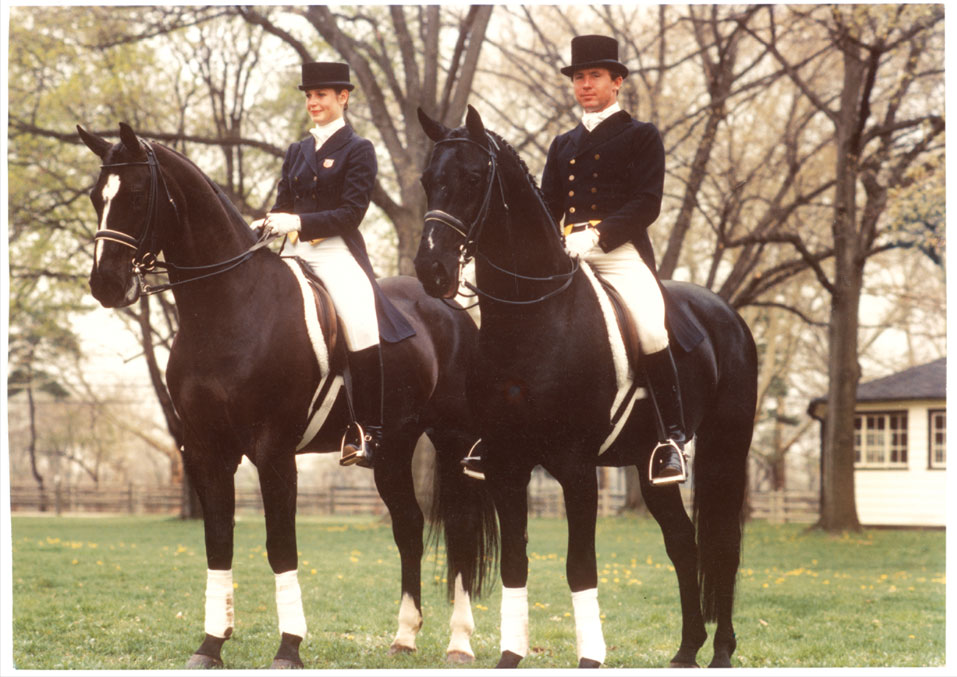
Gunnar seemingly had no ego; he remained both humble and respectful all the years I knew him. It was never about money with Gunnar —he had no desire to become a businessman, he simply lived his passion, and he was particularly keen on producing hot-blooded Thoroughbreds. While European Warmbloods were making their mark on the competition scene, particularly in Germany, Gunnar remained faithful to his Thoroughbreds, and said that in order to bring home a ribbon, they had to be “twice as good to beat the Germans.” And many were. His list of Thoroughbreds that made the Danish Team was long: Atmospherics, Inferno, Souliman, and C’est Bon.
I lived for Wednesdays—I couldn’t get enough. One Wednesday was particularly memorable. There was a terrific snowstorm, and I crawled along the road in my Beetle. I nearly turned around three times, as the snow was above the hubcaps and the wipers were doing little to keep the flakes from freezing across the windshield. When I finally limped into the parking area, I got out of my car, trudged through the snow, and shoved open the massive barn door, blinking as my eyes adjusted from the blinding snow to the low light of the indoor. Before me was Gunnar, puffing away on the pipe in his mouth and performing the most exquisite piaffe I had ever seen. The gleaming white of Talisman’s coat, as bright as the snow that swirled around me outside, was filigreed by the morning light now streaming in...It was like watching a movie: horse and rider framed in the doorway, moving from piaffe into passage and back into piaffe—classically correct and utterly breathtaking. With his trademark droll humor, he glanced over at me and remarked nonchalantly, “Huh, didn’t think you’d make it.”
That this man would take me beneath his wing and give me the opportunity to ride all those horses...horses that he had trained and competed with renowned success. Gunnar was unbelievably generous with his knowledge, and never made a big deal out of handing me the reins of one of these international Grand Prix horses saying, as if offering a little kid a pony ride at a fair, “Here, you can try a ride on this one.”
These were halcyon days. I was receiving training I could have only dreamt about with Gunnar, establishing a steady business for myself, and developing a social life.
This excerpt from Life as a Dressage Trainer in Three Country is reprinted with permission from Trafalgar Square Books. To order a copy in print or audio, go to: TrafalgarBooks.com
Photo credits:
BUY NOW on Amazon
Print: Paperback
Kindle: Kindle edition
Visit Horse & Rider Books
There a more really interesting books on riding and all aspects of equestrian living in our section on Books.
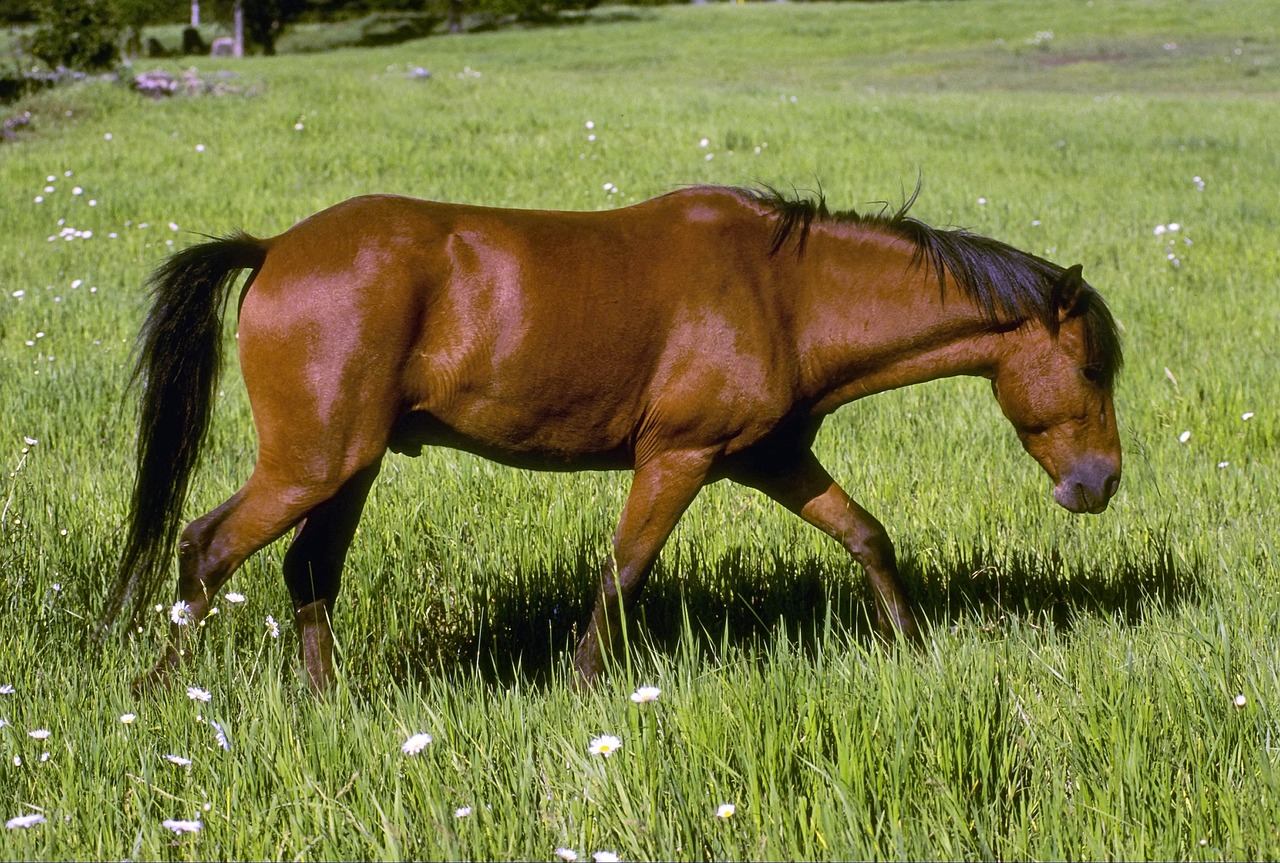
By Juliet M. Getty, Ph.D.
A smooth, strong topline is a definitive sign of health. Your horse’s back musculature not only looks good but is important for his ability to support his spine and joints.
If the topline is diminished, it is important to assess its cause. Some possible reasons include:
- Multiple pregnancies
- Poor saddle fit
- Ridden at too early an age
- Lameness
- Too much time in a stall – not enough movement
- Weakened abdominal muscles
- Muscle-related diseases such a polysaccharide storage myopathy (PSSM) and exertional rhabdomyolysis (ER)
- Pituitary pars intermedia dysfunction (PPID), commonly called Cushing’s disease
- Weight loss diets that restrict forage
- Aging
- Low quality nutrition
While each of the above points can be discussed at length, emphasis will be on the last four bullet points since they are influenced by your horse’s diet.
Why does PPID cause muscle loss?
One of the first physical characteristics of this disease is a decline in topline muscle mass.[i] Cortisol is a catabolic hormone, meaning it causes muscle weakness and wasting. Because of the excessive production of adrenocorticotropic hormone (ACTH), and hence, cortisol, the muscles will break down or atrophy, and so you will see a characteristic swaying of the back.
Losing weight by limited forage intake will make matters worse[ii]
Reducing caloric intake and burning more calories helps your horse’s body use the energy he is storing. But there is a component to weight loss that has nothing to do with calories – it has to do with hormones. Hormones, such as cortisol and insulin, dictate to your horse’s body how much fat he will store; these hormones are keenly sensitive to stress.
If you are seeking help for your overweight horse, you may be getting advice that is unsuitable for your horse’s long-term health. If eating less means taking away hay or pasture, then it is contradictory to what your horse needs. Yes, do take away fattening cereal grains and sugars, but never, never, never restrict forage.[iii] Why? Because restricting forage is the most stressful thing you can do to your horse.[iv]
Restricting forage results in loss of muscle mass.[v] You will see weight loss, but much of it is due to a reduction in the longissimus dorsi muscle that runs along the topline.[vi]
Aging[vii]
The body changes with age, along with reduced muscle mass[viii] for several possible reasons:
- Saliva and digestive enzyme production diminish. This can result in poorly digested feed. Combined with possible poor dentition, and your horse may not be getting the calories and nutrients he requires.
- Stressors can impact the hindgut microbiome. Stress due to bodily aches and pains, and possible changes in pecking order within a herd can influence the microbiome’s health and ability to digest fiber for calories.
- Insulin resistance. Many horses develop metabolic conditions with age that manifest themselves as insulin resistance. In this situation, the tissues do not get enough glucose, leading them to rely on muscle for glucose production.
- Reluctance to move. Loss of muscle tone is inevitable if the horse is retired and no longer has the same level of physical activity. Degenerative joint conditions can also make your horse less eager to exercise.
How many pounds of protein does a horse require?
On average, an adult horse at maintenance will benefit from 1.4 lbs (636 grams) of protein per day.[ix] Horses who exercise moderately require more (2 to 2.15 lbs per day; 908 to 976 grams per day). To put this into perspective, consider your horse consuming 20 lbs of hay with 10% crude protein content - providing 2 lbs of protein per day. This would appear to be sufficient, but the “quality factor” needs to be considered.
Forage protein quality
If your horse gets only one variety of forage, whether fresh pasture grasses, or hay, the protein quality will be low. Adding alfalfa or mixed grasses will definitely improve the protein profile. The more forage variety, the better.
Crude protein is not a measure of quality.[x] It merely tells you how much nitrogen is in the feed. To be of high quality, there needs to be sufficient essential amino acids in the proper proportion so the horse can produce proteins throughout the body.
What protein sources can you consider for topline improvement?
By adding other sources of protein, the amino acids from forages can be better utilized and fewer of them will go to waste.[xi] Some good examples:
SEEDS
- Hemp seed meal- 22 grams of protein in 1/2 cup. Hemp seed meal is high in excellent quality protein (33%) and lower in fat than the hearts (10%).[xii]
- Hemp seed hearts - 29 grams of protein in 1/2 cup. Hemp seed hearts are even more concentrated in protein, and their quality is the best source of plant protein.[xiii] Highly palatable.
- Chia seeds- 9 grams of protein in 1/4 cup. Chia seeds are excellent to include in all horses’ diets because of their protein content, but more importantly, because of their perfectly proportioned essential fatty acid content.[xiv]
- Flax seeds (ground)- 10 grams of protein in 1/2 cup. Like chia, with an essential fatty acid proportion that mimics the omega 3 to omega 6 ratio found in fresh pasture grasses.[xv]
- Pumpkin seeds – shell removed- 37 grams of protein in 1/2 cup. Highly concentrated source of protein and digestive enzymes. The fat content is mainly omega 6 -linoleic acid (LA) which can be inflammatory if omega 3s are not also added to the diet.
- Black oil sunflower seeds with the shell- 5 grams of protein in 1/2 cup. Mostly fiber. High LA content makes them inflammatory if omega 3s are not also added to the diet.
LEGUMES
- Soybean meal- 27 grams of protein in 1/2 cup. GMO Soy is not advisable.[xvi],[xvii],[xviii],[xix] Organic soy is excellent in quality.
- Split peas- 24 grams of protein in 1/2 cup. Can add water to soften but horses enjoy crunchy texture. High in lysine.
- Pea protein isolate- 30 grams of protein in 1/2 cup. More concentrated in protein that the split peas.
- Lupins- 25 grams of protein in 1/2 cup. Similar to peas, they are often added to horse feed, especially in Australia.
ANIMAL PRODUCTS
- Whey protein isolate- 40 grams of protein in 1/2 cup. High quality protein from milk. Whey concentrate can contain lactose; therefore, choose the isolate.
- Colostrum- 18 grams of protein in 1/4 cup. This is an excellent superfood.[xx] It provides insulin-like growth factors (IGF) which promote optimum muscle growth during exercise.[xxi] Also beneficial for aging horses who may be becoming more frail.
- Collagen- 28 grams of protein in 1/4 cup. Contributes to joint and muscle strength.
OTHER
- Copra meal- 22 grams of protein in 1/2 cup. This is coconut meal. Its protein is not high in quality[xxii] with a relatively poor level of lysine and other essential amino acids. When mixed with other protein sources, it helps boost the overall amino acid profile. Contains coconut oil, which is devoid of essential fatty acids.[xxiii]
Other nutrients for muscle mass development
Spirulina. This is a type of blue-green algae. It has been touted as a good food for muscle building, but it is relatively low in lysine and methionine. But when added to the diet that contains other sources of proteins, it can contribute to a healthy amino acid pool. Its main benefit is for immune support, particularly insect-related allergies.
Amino acid supplements. Many preparations offer three of more of the 10 essential amino acids, typically lysine, methionine, and threonine, since these three have been studied the most. The branched chain amino acids -- leucine, isoleucine, and valine, are essential amino acids that are found in high concentrations within muscle cells.
Vitamin B6. Pyridoxine (vitamin B6) is required for protein synthesis. Since the microbial population in the hindgut can produce this vitamin, its supplementation is generally not necessary. However, an aging or stressed horse may experience a decline in B vitamins. B6 in particular, increases the gene expression of factors that promote the growth and repair of skeletal muscle.[xxiv] Supplementing B6 to horses hasn’t been studied extensively but providing 30 to 70 mg per day may be beneficial in the short term.[xxv]
Gamma oryzanol. A plant sterol that has an anabolic (building) effect on muscle mass. Found in low concentration in rice bran oil, it is better to choose an extract. It stimulates muscle development in exercised horses.[xxvi] It is not beneficial however, for sedentary animals.
Bottom line
The horse relies on a diet that is sufficient in quality protein to maintain a healthy, strong topline. By feeding several protein sources, you can provide your horse’s body with an ample essential amino acid pool from which body proteins can be produced. Since pasture grasses and hays often do not provide enough amino acid variety, it is worth adding high-protein whole foods to boost the overall value of the diet.
This article originally appeared on Getty Equine Nutrition and is published here with permission.
Find more informative articles in our section on Health & Education.
Monty Roberts shares horse training ideas for horse lovers who want to educate themselves on the behavior and needs of horses. Find out more at montyroberts.com
Read more: Ask Monty: Why is my horse aggressive at feeding time? (1:22)
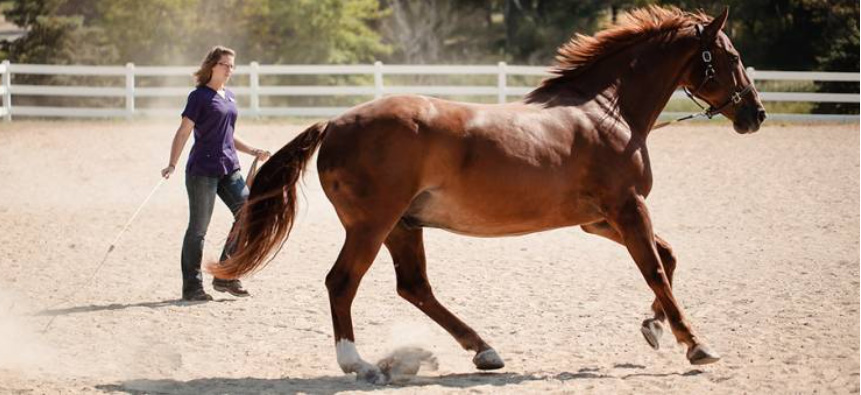
By Kentucky Equine Research Staff
Acknowledging the importance of treating chronic pain caused by osteoarthritis in horses, a team of veterinary scientists recently developed a novel tool called the “Equine Brief Pain Inventory” or EBPI.* With this tool, horse owners monitor chronic pain in their horses so they can identify discomfort caused by osteoarthritis, gauge response to treatment, and recognize when treatment modifications may be indicated.
“Chronic pain from cartilage damage, heat, and joint swelling due to osteoarthritis result in lameness, decreased mobility, and loss of normal function. Further, uncontrolled pain negatively affects the quality of life and welfare of a horse,” explained Kathleen Crandell, Ph.D., a nutritionist for Kentucky Equine Research. “When the amount of discomfort an animal appears to be feeling goes unrecognized by the caretaker, chances are it will be left untreated by a veterinarian.”
Currently, veterinarians manage arthritis using a multimodal treatment approach typically involving nonsteroidal anti-inflammatory drugs (NSAIDs) including phenylbutazone or bute, regenerative therapies such as IRAP (interleukin-1 receptor agonist protein) and PRP (platelet-rich plasma), and oral joint health supplements. Kentucky Equine Research offers several research-based supplements to prevent or manage horses with osteoarthritis, such as Synovate HA.
“Horse owners consistently see their own horses and are best able to detect changes in behavior, movement, and facial expressions that indicate pain. However, as prey animals, horses tend to hide signs of discomfort to avoid attracting the attention of predators. As a result, signs of chronic pain may be overlooked by owners. This is particularly true for a condition such as osteoarthritis that may have wax-wane pain presentation,” Crandell said.
Using established strategies, researchers developed an EBPI specific to horses with osteoarthritis, mirroring closely ones that are used in human and canine patients. This tool involved a 15-question survey that polled owners about their horses’ posture, movement, facial expressions, and behavior. Owners circled a number from 0 to 10 based on the score that best describes their horses.
After extensive development, 25 owners or caretakers of horses with osteoarthritis tested the EBPI. Most of this pilot group (over 84%) found the questionnaire easy to complete and useful. The EBPI took less than five minutes to finish and had a readability suitable for 11- and 12-year-olds.
“Using this tool, owners can play a more proactive role in identifying pain so that a management plan can be created with the veterinarian. It will also allow caretakers to continuously monitor horses to address when their pain management strategy needs tweaking or updating.”
Read more: New Tool Recognizes Pain in Horses with Osteoarthritis
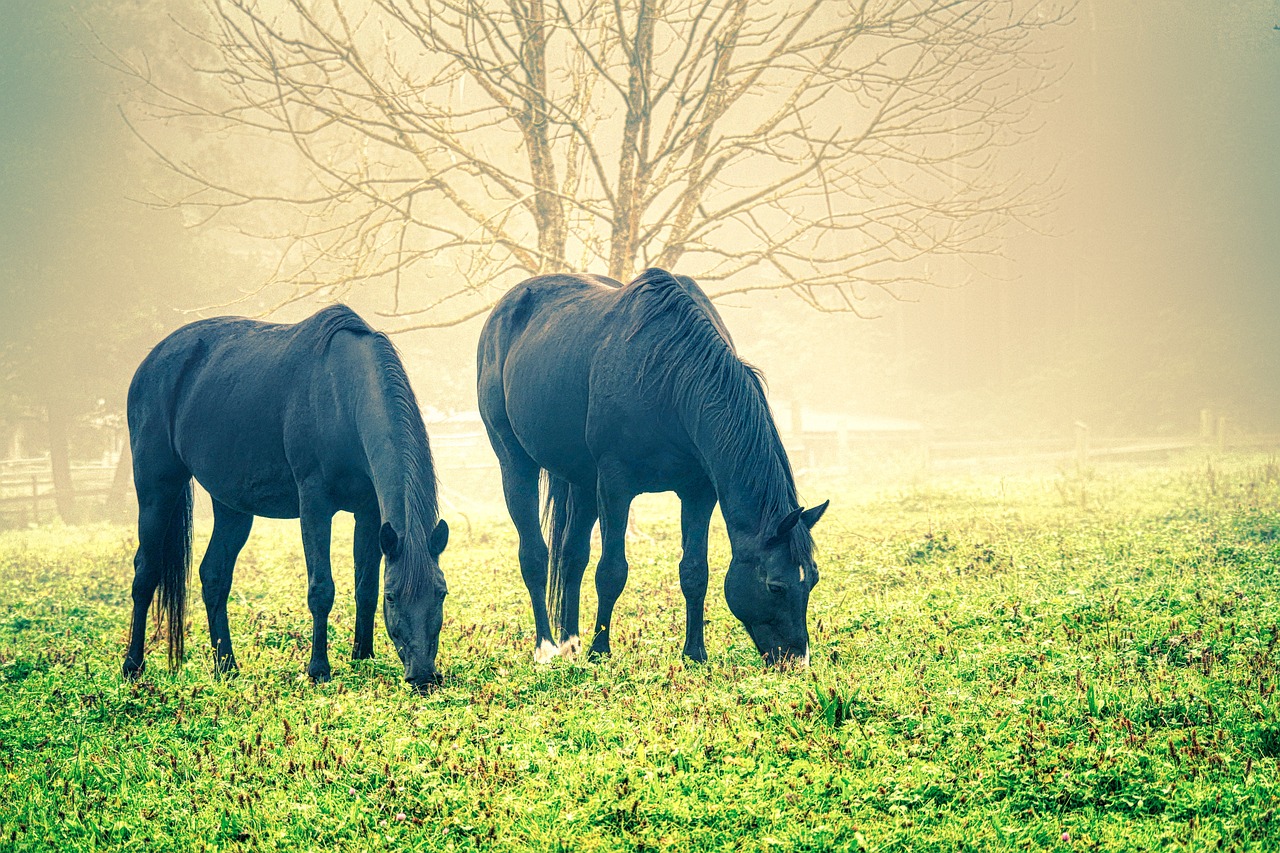
By Juliet M. Getty, Ph.D.
Reasonable, gradual weight loss can be achieved by creating an environment that allows horses to eat and behave in sync with their normal instincts. Hormones such as insulin, cortisol, and leptin are in homeostasis, where the body achieves a state of equilibrium and performs as it should.
It starts with making the horse feel safe. The foundation of safety is knowing that there is always something to eat. Without this, the very underpinning of health becomes unhinged. Piling supplements and expensive feeds onto this insecure footing will make a trivial, insignificant, and short-term difference.
A steady, never-ending supply of appropriate hay/pasture will allow your horse to realize that he can eat effortlessly. In very little time, he will begin to self-regulate his forage intake and eat only what his body needs to maintain condition.
There are cases, however, where the horse not only doesn’t self-regulate, he actually gets heavier. Why is this? And if this is your horse, is there no hope? Do you simply have to go back to restricting hay? There are several reasons why this can occur and no, you do not and should not go back to restricting hay.
Free-choice forage is fundamental but it is not enough
If you are expecting to simply give your horse all the hay he wants and he’ll start to miraculously lose weight, while his nutrient intake remains inadequate and there are significant stressors in his life, you will likely be disappointed. Free-choice forage feeding will, however, improve his behavior and digestive health, even without weight loss. But to have an impact on his weight, other practices need to be in place.
Four components should be considered
An excellent diet, stress reduction, the right environment, and patience are key ingredients to making weight loss a reality. Below are factors that can make this happen. I realize that for many of you, it is not feasible to implement all of them. My goal is to give you the ideal situation; your goal needs to be to come as close to the ideal as possible. Even making some of these changes will improve your horse’s health.
1. Excellent Diet
Appropriate forage
The hay and/or pasture need to be low in sugar and starch, as well as low in calories, because your horse will be eating a lot of it. Testing your hay is critically important. If Ethanol Soluble Carbohydrates (ESC) + Starch exceeds 11% on a dry matter basis, you’ll want to seriously consider soaking it.[i] If the hay supply changes frequently where your horse is boarded, consider buying your own hay; even a one month’s supply is worth testing.
Pasture grazing, of course, is ideal, but it can be tricky because its sugar and starch content varies so much. It, too, is worth testing periodically at the best and worst times of the day.[ii] The ideal is a pasture with a mix of healthful forage. Many horses can lose weight while pasture grazing in such conditions; it is the most natural, least stressful state for the horse, and provides the most nutritious whole food.
Aggressively attack inflammation
Where there’s body fat, there’s inflammation, leading to insulin and leptin resistance. A vicious cycle ensues because leptin resistance prevents the brain from telling the horse that he’s had enough to eat, and insulin resistance tells the horse to hold on to body fat. In both of these situations, body fat increases, further exacerbating inflammation.
To effectively reduce inflammation, boost the diet with antioxidants, anti-inflammatory herbs, key minerals, and the right balance of omega 3s to 6s, preferably from supplements that provide wholesome ingredients without the use of added preservatives. Please review articles[iii] in my website’s resources for specific ways to accomplish this.
Get rid of the concentrates
Supplements can be added to a small amount of a carrier feed such as hay pellets, non-GMO beet pulp, or whole foods (avoid soy). But do not feed large amounts of any “grain” including those that contain cereal grains (oats, corn, barley, rice, etc.), molasses, or added vegetable oils; these do nothing except add unnecessary calories.
2. Stress Reduction
Forage restriction is incredibly stressful
The horse’s digestive tract is designed for a continual flow of forage; without it, the horse will be in physical pain, mental discomfort, and prone toward a hormonal response that destroys health and promotes obesity.[iv] If he runs out of forage, even for a few minutes, your horse’s system will register this as an impending famine and his body will hoard fat.
The damage from prolonged forage restriction can be difficult to repair
The only way to fix your horse is to help him return to his natural state. However, the longer a horse lives as an overweight, stressed animal, the more inflammation he will have within his system, making it difficult it to bring that horse back to a normal weight, free of leptin or insulin resistance. Years of enduring forage restriction will definitely take its toll. But the solution is not to continue down this destructive path; the solution is to try to make things better.[v]
Grazing muzzles may defeat your purpose
If your horse tolerates a grazing muzzle, it can allow him to spend some time out on pasture with his buddies. But a muzzle can defeat your purpose if it causes frustration and its attendant cascade of stress-induced hormonal reactions. So pay attention to your horse. Even if he accepts the muzzle, limit its use to no more than 3 hours per day. Muzzles are hardly ideal—they do not really allow sufficient forage consumption for healthy digestive functioning, but the benefits of exercise and companionship in the pasture can outweigh the downside of short term reduction in forage intake. Make certain that your horse can drink water and that water drains well.
3. The Right Environment
Movement is so important
Movement does more than burn calories; it keeps your horse whole, physically and psychologically. Confinement to a small paddock (even though it is outdoors), or worse, to a stall, for hours on end, reduces circulation, increases the horse’s sense of vulnerability, increases susceptibility to depression, creates inflammation throughout the body, decreases the metabolic rate, reduces immune function, and depresses digestive tract motility, to name only a few outcomes. All of these have the same impact on your horse’s weight – they can lead to obesity because of the hormonal and metabolic responses that tell the horse to hold on to body fat.
Freedom to roam and interact with other horses
Horses require the protection of a herd. They are also social animals and need the interaction of close physical contact; merely seeing other horses over the fence is not enough.
Room to roam, along with freedom to choose whether to be out in the sunlight, or under a tree, or in a shed -- perceiving he has options for comfort and safety is a calming force for the horse.
Slow feeders can be wonderful when used correctly
Slow feeders come in a variety of styles and methods.[vi] Allow your horse to gradually become accustomed to eating from them by also providing loose hay. Feeders need to be kept full at all times, the hole size for netted styles should not be smaller than 1.5 inches, and, depending on design, they should be kept low or on the ground to simulate the horse’s natural eating stance. Provide many of them throughout his area to encourage grazing.
4. Patience!
At first, he will overeat
Give a horse all he can eat, and at first he will overeat, a lot! It can be difficult to watch. Be sure you’ve tested your hay and it is suitable. Then give him more than he could possibly eat so that there is some left over. If you don’t give him enough and he eats it all, you will not accomplish your goal. But if he has so much that he can’t finish it, and he can leave and return to find it still there, he will eventually reach the magic moment – he will walk away! Eventually, he will eat far less than he did at the beginning.
Many barn managers are not willing to do this because it seems like a waste of money. But in actuality, the horse will eat less once he self-regulates than he did when he was only getting a set ration of hay.
Give it enough time. Most horses start to self-regulate within a couple of weeks. Some take a couple of months. And those who are leptin resistant take even longer.
Sometimes it’s gas, not fat
Forage contains large amounts of fiber, which is fermented in the horse’s hind gut (cecum and large colon), resulting in gas formation. This is normal and healthy, but it can make your horse look pregnant. This is not fat; it’s gas--otherwise known as a “hay belly.” Do not let it concern you. Your horse will adjust. If it gets excessive, however, it would be best to help out the microbial flora in the hind gut by administering a good prebiotic.[vii]
Horses will gain weight at first
Overeating naturally leads to weight gain. But it is only temporary. Allow for movement, feed an anti-inflammatory diet, get rid of stress, and you will have a different horse.
Abandon the conventional weight loss mantra!
“Eat less!” This continues to be spouted by many horse owners and equine professionals. In fact, equine research in this area has revolved around reducing forage, often with “positive” results. But it is exceedingly short-sighted! What they don’t tell you is how those same horses are doing a year later. Nor do they examine the inflammatory, metabolic, endocrine, physiologic, and even hypothalamic damage in the brain that results from forage restriction.[viii]
We know about the damage this causes to humans. Why do we use this method with horses? Excessively reducing calories will result in weight loss. But wait! Give it some time and the weight not only creeps back but even more weight is put on. Recently, the New York Times did a piece on the “Greatest Losers,”[ix] a reality TV show where overweight men and women underwent extreme dieting and exercise and were praised by all in their efforts as they showed off their newly trim selves. Six years later, they were back to where they started, or worse, due to a shift in normal metabolism.
It is no different for horses. Prolonged forage restriction ultimately resets the metabolic rate to a slower level. In addition, the body’s hormonal response changes, making it very difficult for the horse to successfully keep off the weight without sacrificing health and quality of life.
Bottom line
Why not simply allow your horse to be healthy? Weight loss the wrong way will ensure that your horse will get fat again. Being patient, reducing inflammation and stress, and creating a healthy environment will do the trick. Sure, take away calories from concentrated feeds – that’s fine. But never, never restrict forage.
This article originally appeared on Getty Equine Nutrition and is published here with permission.
Find more informative articles in our section on Health & Education.
Read more: My Horse is Gaining Weight on Free-Choice Forage! Why Isn't it Working?
Whether you are looking to take home high-point champion or just have an overall positive experience for your young horse, here are six important items to have in tow for your next show day!
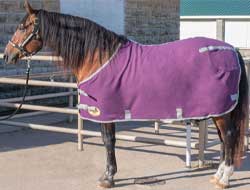
Fleece Horse Sheet
Fleece sheets are ideal to wick away sweat from riding and hauling. They also offer horses warmth and help keep them clean. Our favorite feature of this sheet is that you can customize with a monogram and choose everything from tread color to font and placement of your design. They also serve as a great extra layer beneath winter blankets for the coldest winter weather.
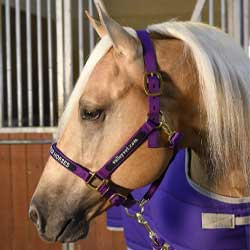
Personalized Nylon Halter
Match to your horse’s blanket or sheet with this personalized nylon halter. You’ll enjoy the many customization options available right at your fingertips, from color to font and more. See for yourself in this video!
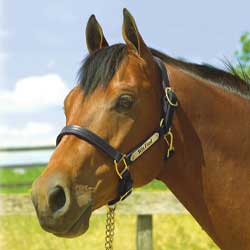
Premium Leather Halter
This premium leather halter, with the option to engrave your horse’s name, offers a classic look that pairs perfectly with show day. Plus, Perri leather halters are crafted from wide, triple-stitched leather that is supple right from the start.
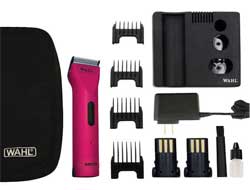
Wahl Clipper Kit
Everyone is in their Sunday best come show day, horses included! For clipping, look to this kit from WAHL for a smooth and quiet trim. The kit includes:
- Clipper (variety of colors available!)
- Two battery packs
- Charging base
- Clipper case
- Detachable blades
- Four guide combs
- Oil
- Cleaning brush
- Grooming Tote
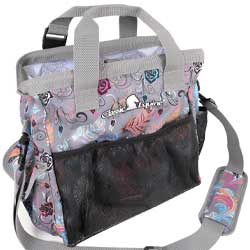
Groom Tote
Organization is crucial during a busy day on the show grounds. Available in several fun colors and patterns, this handy groom tote comes equipped with multiple dividers, sturdy pockets and a padded shoulder strap. See how many items you can tote in this tote, here!
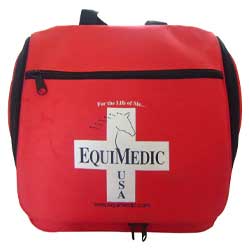
Equine First Aid Kit
When traveling anywhere, whether for show or play, it is crucial to bring an equine first aid kit with you, should your horse become injured. We couldn’t agree more with the words from one of our customers, “Fortunately, I have not had to use this, but I am happy to have [an equine first aid kit] handy and available, in case of need.”
At Valley Vet Supply, we’re here to help you care for your horses the best way we know how, with great quality products. Visit ValleyVet.com today for your every equine and show-day need.
- Inside the Recipient Mare Herd from the Rood & Riddle Reproduction Center with Crystal Howard" (24:28)
- Breeding for the Next Champion: 6 Important Considerations for Broodmares
- Empty Fields Everywhere Why Movement is So Important
- Hard Tying the Horse to a Rail or Post with Michal Kays (5:37) - Certified Horsemanship Association
- The Icelandic Horse - Quite the Characters!
- 4 Signs of a Happy Horse
- Stallside Podcast - Behind the scenes with the Rood & Riddle Anesthesia and Surgery Technician Team (34:01)
- Breaking the Cycle of Hoof Lameness: Navicular, Laminitis, Pedal Osteitis (14:25)
- Rood & Riddle: Advances in Equine Healthcare (6:37)
- Extending Photoperiod for Muscle Development in Young Horses
- Adopting a Wild or Feral Mustang?
- Rood & Riddle Stallside "Inside the Breeding Shed with Sandy Hatfield, Stallion Manager at Three Chimneys Farm" (31:37)
- The Horses of Iceland - Many Different Colors
- Minis – A Big Horse in a Little Package
- Holding the Horse for the Vet or Farrier with Julie Goodnight (7:03)
- Fitting the Martigale with Julie Goodnight (12:33)
- Colic in Horses, Explained
- Lengthening and Shortening the Horse's Strides with Ann Brzezicki (20:31)
- Equine Asthma: Current Understanding and Future Directions Research - Dr Dorothee Bienzle (14:25)
- The Real Cost of Horse Ownership - Jackie Bellamy-Zions (5:51)






